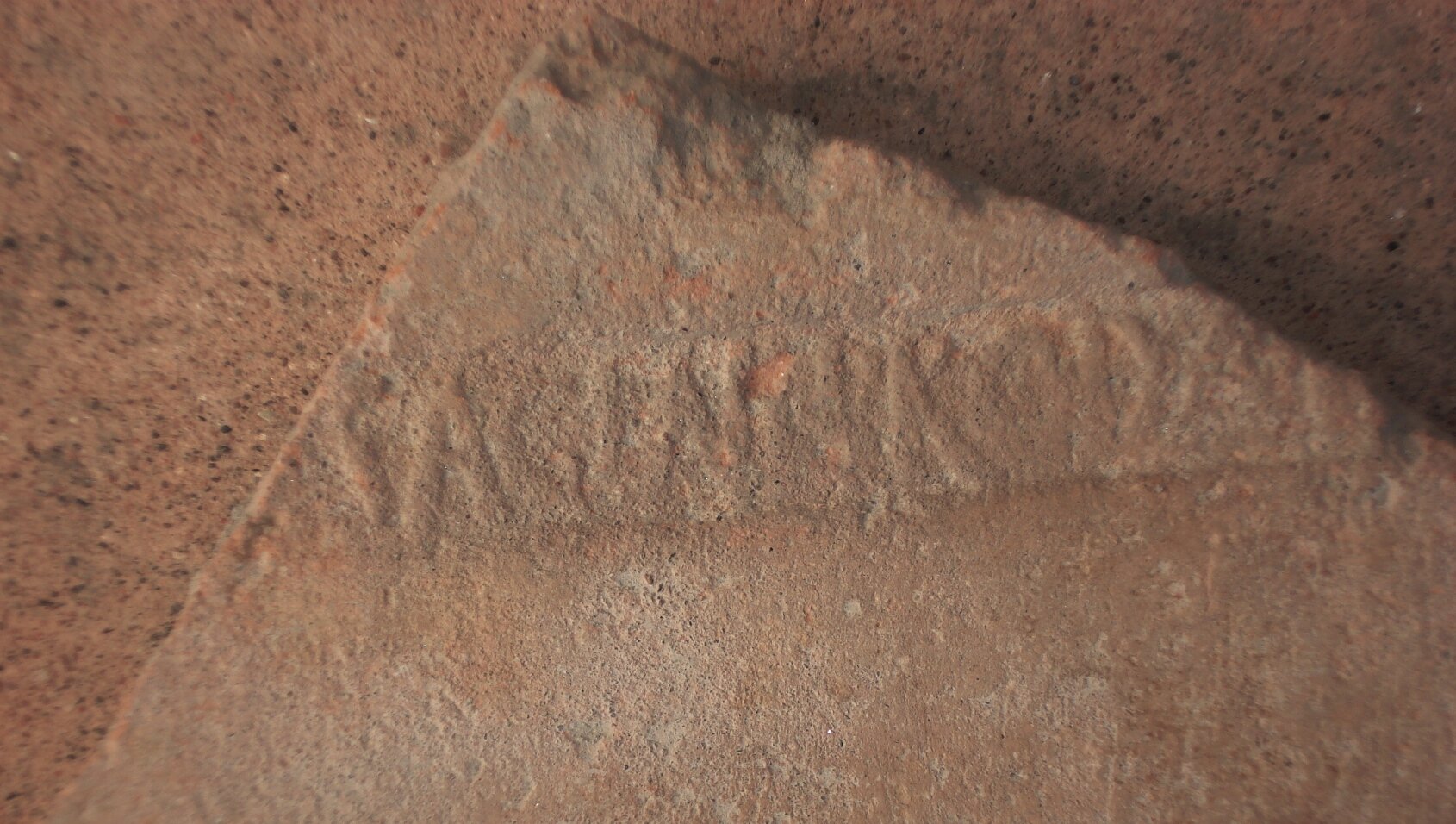Cess pit
Description
Thomas Staub
Cesspit: in the central southern part (in front of the wall between the two doors to room e), a 1.10 x 0.95 m large part of the floor has collapsed into a hole under the floor and the dividing wall between rooms d and e, probably the cesspit for the toilet in the north-east part of room e. At the northern side of this cesspit, two terracotta pipes (diam. ca. 0.09 m) seem to reach it from the north, one in the middle and one near the north-east corner, ca. 0.60 m under floor level. Under the south wall, a Sarno stone block, covered with plaster, protrudes for 0.20 m into the cesspit.
The cesspit was found when cleaning the floor in the posticum. Parts of a roof tile were found in the cesspit, possibly reused as lid for the pit. With the help of a tile stamp, (Preserved are the letters SAGINI.PRODaM) the producer of the reused roof tile could be identified as L. Saginius Prodamus, (See Steinby 269. In CIL X, 8042, 91 another 14 examples of this stamp are listed. One more has been observed by Seiler in the Casa degli Amorini dorati (VI 16,7), see Seiler 1992, 81 with Abb. 520 and Wallat 1993, 355f) probably a freedman of the Augustan Duumvir L.Saginius. (On the dating of L. Saginius to the Augustan period see Castrén 1975, 102 and Mouritsen 1988, 76. The tile with the same stamp found in the Casa degli Amorini dorati was situated in a Third Style context, see Seiler 1992, 81 and note 184.) The roof tile could thus be dated to the Augustan period. This dating could serve as a date post quem for the creation of the cesspit.

